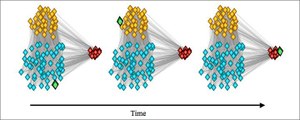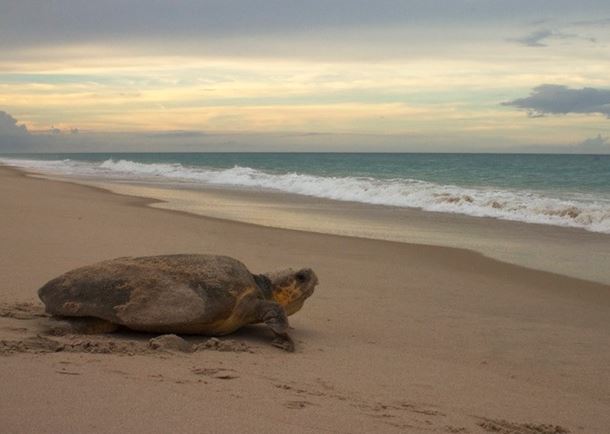Carolina researchers are using 3D technology to help fitness hobbyists and college athletes avoid or recover from knee injuries.
When you think of motion capture technology, you might think of the movie magic that brought Jurassic World to life or made Avatar a box office hit.
But that’s not the only way to use motion capture.
Carolina researchers are using the same technology to help everyone from fitness hobbyists to college athletes avoid or recover from knee injuries.
“I think a lot of people don’t realize that musculoskeletal conditions cause more disability in our country than many other disease categories,” Brian Pietrosimone, a core faculty member in the MOTION Science Institute. “We’re interested in helping prevent injuries from occurring, but also in how we can actually keep people moving when they have some musculoskeletal injury or condition.”
The institute looks a little bit like a movie set. Ten cameras line the walls, ready to record motion from every angle.
As a patient walks and jumps across the room wearing dozens of tiny sensors, the cameras collect the data they need to build a 3D model of the patient’s movement.
Pietrosimone, an associate professor in the College of Arts & Sciences’ exercise and sport science department, uses the data to explore whether an individual is at risk for knee injury or arthritis: does his knee collapse inward when he lands from a jump? Does one leg take on more weight than the other? The lab then looks at whether these movements match up with early breakdown of knee tissues.
That’s not the only way the lab collects its data. They’re also using a treadmill with two separate tracks — one for each leg — with built-in force plates to capture both motion and stepping force. Pietrosimone and his team can use this information to determine whether a patient is walking unevenly, which often happens after a patient experiences an ACL tear or another severe knee injury.
The team also uses ultrasound and MRI machines to look for acute changes in cartilage size and composition to recommend ways for patients to prevent long-term issues such as arthritis.
“One of the problems with arthritis is that you normally find out that you have it based on an X-ray, and that means that the bones have already changed shape and there’s really nothing you can do at that point,” he said. “The hard part is trying to find ways to see if the tissue is changing prior to the patient developing those structural changes. That’s really what we want to do.”
For athletes and others who have experienced a knee injury, assessing for harmful joint changes early can help slow down or stop the progression of arthritis altogether. And for those who already have arthritis, Pietrosimone and his team are looking at ways to optimize rehabilitation.
“This condition can stop people from doing activities in daily life, so we’re looking at ways that we can improve their function in things like walking up and down the stairs, getting up from a chair or getting in and out of a car,” he said.
Kyle Wallace, a study coordinator in the lab, has experienced the effects of knee pain personally after incurring several injuries and reconstructive surgeries as an athlete. While he was an undergraduate at Carolina, Wallace joined the lab as a volunteer and later returned to work with the team full-time after he graduated in 2017.
“I was an athlete in high school, so that’s how I got interested in sports medicine,” Wallace said. “I had an affinity for medicine and helping, so the two worlds collided at UNC, and I was able to find a great research lab and team.”
His experience working in the lab has affirmed an interest in sports medicine, which he plans to explore further in medical school. For now, Wallace and Pietrosimone share the goal of keeping people moving.
“Arthritis is a disease that we don’t have a cure for right now, and it’s a very debilitating disease as it is,” Wallace said. “It affects everything from walking and running to sleeping and standing, which affects your entire life. So we want to do our best to alleviate that burden.”




